- Administrator
- Albums and Singles
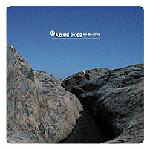 Finally... Ant-Zen has returned to form. Or, I should say Cold MeatIndustry by proxy of Ant-Zen, since Azure Skies is a new projectcombining both males (or just one? I'm not too sure) of Sanctum andboth Durling brothers of Mental Destruction, two CMI mainstays.
Finally... Ant-Zen has returned to form. Or, I should say Cold MeatIndustry by proxy of Ant-Zen, since Azure Skies is a new projectcombining both males (or just one? I'm not too sure) of Sanctum andboth Durling brothers of Mental Destruction, two CMI mainstays. This disc is almost like a renaissance for .. er .. "rhythmic noise" (Iloathe that term, but I'm at a lack for better words). It was ratherunexpected on my part, but it pulls no punches and places Ant-Zen backon the roadmap it was beginning to explore with the early rhythmicnoise releases... it reminds me of one album in particular, ImminentStarvation's "Nord," a classic album. But it goes beyond that.
Sprinkled throughout the album are achingly beautiful structure andmelodies (no doubt written by the Sanctum member[s]), which add untoldamounts of character and replay value to a genre like this. The harsh,drilling beats in "Crater" are offset by a warm, calming melody ...which is literally a breath of fresh air. "Bring Nothing Back" isobviously influenced by Jan Carkelev's (Sanctum) sideproject ParcaPace, which was a 18-minute masterpiece of beats, chants, and violins -they're all here, but the beats are made even better by the Durlingbrothers. Brilliant.
Though, the album does get a tad bit repetitious at points... but doesit ever go so far as to be boring? Nah. You also should stay away fromthis release if you're expecting dance music - it has beats, but thisis mood music. The album is beautifully packaged in a jewel case withwarm, cool tones throughout and a picture of - what else? - beautifulazure skies gracing the cover. For anyone who felt betrayed withAnt-Zen's recent releases (PAL's "Release".. *cough*), this album is areturn to form and a must-have.
samples:
Read More
- Terry McGaughey
- Albums and Singles
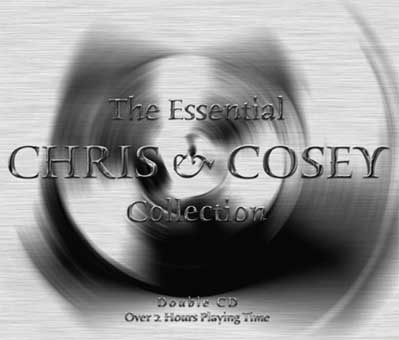 Chris and Cosey - like their only real peers, Coil - are a band whose ideas have been mercilessly pruned from a succession of increasingly astounding albums by all sorts of different folk, whose tenacious influence is similar to the ghost in 'The Haunting of Hill House' - barely seen, but profoundly felt.
Chris and Cosey - like their only real peers, Coil - are a band whose ideas have been mercilessly pruned from a succession of increasingly astounding albums by all sorts of different folk, whose tenacious influence is similar to the ghost in 'The Haunting of Hill House' - barely seen, but profoundly felt.
This double CD set manages to serve up about two hours worth of why they were and are such a powerfully unique unit, a duo still militantly convinced by their own vision, still working outside even the smugly comfortable world of experimental dance, and coming up with pure gold every time.
All of the albums are well represented here, particularly key releases Heartbeat (the thunderous 'Put Yourself in Los Angeles' and abrasive/ludicrous 'Hairy Beary'); Trance (the stunning and vastly influential 'Cowboys in Cuba') right through the stunning string of mid to late eighties albums Songs of Love and Lust, Techno Primitive and Exotika up to their ultimate statement of intent to date, Skimble Skamble. One minute they sound like Nico covering Barry White (on 'Dr John'), the next minute they're serving up oceanic waves of sound, buried pulsing beats and oscillating electronica...and they just take another swig of Martin Denny and roll out the joy some more.
Do yourself and your friends a favor - let this compilation burn a hole in your Christmas stocking this year, and then wait a few moments for your life to change.
samples:
Read More
- Administrator
- Albums and Singles
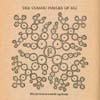 No, it's not a much-needed tribute to the KLF/JAMMs, it's another 2xCDcollection of electronic music from friends of a musician who runs hisown label. It might not be as varied or densely packed like aTigerbeat6 comp or thematically tied as a Morr comp, but it doescontain some fine moments of both label-promoting and friend-promoting.Hrvatski's guitar and click "Lullaby" contribution reminds me all toowell that there aren't enough Hrvatski albums in the world, MikeParadinas' alias Kid Spatula serves up a dish tastier than any Mu-Ziqrelease I own, and the thoroughly entertaining collage of illegal hiphop samples, "Turntable Savage" by Hellfish. However, there are a fewvery weak spots: like the Vincent Gallo-lite contribution by Dykehouseand the obvious oversampling of Coil's "Hellraiser Themes" in thedrum-and-bass-by numbers "Defluxion" by Venetian Snares or theover-predictable, skippable Tusken Raiders track, "Pansy". In allhonesty, this collection would have probably been much more noteworthyif released in 1997. In the end I'm left affirmed by my affection forElectric Company and my interest in whoever this Joseph Nothingcharacter is. Must research deeper,...
No, it's not a much-needed tribute to the KLF/JAMMs, it's another 2xCDcollection of electronic music from friends of a musician who runs hisown label. It might not be as varied or densely packed like aTigerbeat6 comp or thematically tied as a Morr comp, but it doescontain some fine moments of both label-promoting and friend-promoting.Hrvatski's guitar and click "Lullaby" contribution reminds me all toowell that there aren't enough Hrvatski albums in the world, MikeParadinas' alias Kid Spatula serves up a dish tastier than any Mu-Ziqrelease I own, and the thoroughly entertaining collage of illegal hiphop samples, "Turntable Savage" by Hellfish. However, there are a fewvery weak spots: like the Vincent Gallo-lite contribution by Dykehouseand the obvious oversampling of Coil's "Hellraiser Themes" in thedrum-and-bass-by numbers "Defluxion" by Venetian Snares or theover-predictable, skippable Tusken Raiders track, "Pansy". In allhonesty, this collection would have probably been much more noteworthyif released in 1997. In the end I'm left affirmed by my affection forElectric Company and my interest in whoever this Joseph Nothingcharacter is. Must research deeper,...
samples:
- Kid Spatula - Sharemaker
- Hrvatski - Lullaby
- Hellfish - Turntable Savage
Read More
- Administrator
- Albums and Singles
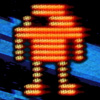 The use of 8 bit chiptune sounds has been extending beyond the insular video game world and into other genres.  Dusty old Nintendo consoles and Commodore 64 computers have been reprogrammed into musical instruments for years now, and there is an entire compilation album of artists using only the Game Boy based Nanoloop software.  Return of the Bloop Beep Buzz pushes this concept even further, using the even more primitive Atari 2600 as its primary source, resulting in a limited, but still unique sonic palette.
The use of 8 bit chiptune sounds has been extending beyond the insular video game world and into other genres.  Dusty old Nintendo consoles and Commodore 64 computers have been reprogrammed into musical instruments for years now, and there is an entire compilation album of artists using only the Game Boy based Nanoloop software.  Return of the Bloop Beep Buzz pushes this concept even further, using the even more primitive Atari 2600 as its primary source, resulting in a limited, but still unique sonic palette.
While the venerable 2600 isn't the most primitive of video game technology, it certainly is close, producing limited graphics and even more limited sounds.Mike Bourque sticks mostly to just the stock system, throwing in processing via the occasional guitar pedal, but never enough to obscure the underlying sounds.
Tracks like "Xenotropolis" and "Red Dragon vs. Square Dude" shape the white noise blasts into a rudimentary drum machine, pushing out a gabber-type throb over bassy abstract loops and Pac-Man like melodic outbursts.Hints of some of the earliest Digital Hardcore releases pop up, but the sound is completely unique.
"Interlocking Secrets" and "Full Attack Mode" also keep a rhythmic structure to them, but it's less of a focus, and more about obtuse loops and dissonant electronics."Wave 44" also is as conceptual as it is rhythmic, building from a dramatically thin, brittle rhythm in to a slightly thicker, but still heavily filtered ending.
The early-Autechre like glitchy crunch of "Dr. Mindbender in the Lab" and technoid thump of "Jammas on the Amazon" round out the multifaceted beat-centric tracks, but there’s also a few abstract, ambient-heavy moments scattered throughout.The textural, amorphous "Xenotropolis" leans into ambient techno realms, but in anything but the conventional sense.
"The Zaxxonian Theory" also is arrhythmic, with outstretched passages of sound and less of a perceptible formal structure, similar to the closer "Into the Darkness we Goeth".This track lets in a bit of industrial rhythmic thump, but ends in an over-driven, noise laden blast, perhaps taking the sound the furthest from its simplistic roots but never fully hiding where it came from.
I've always considered the "chiptune" scene more of a novelty than any meaningful music genre, and I’m probably the biggest video game fan on staff here at Brainwashed.However, this album goes beyond just novelty and is more of a study of limited instrumentation, reshaping the familiar lo-fi sounds into both beats and ambience.While the reliance on a singular source cuts the track-to-track diversity down a bit, the variation in structures covers for it nicely.Surely gamers will get more out of the disc than others, but its appeal wouldn't be limited to just that group.
samples:
 
Read More
- Administrator
- Albums and Singles
 This album actually came as quite a surprise as soon as I started spinning it. I've always associated Wiese with hyper-kinetic, harsh laptop-sourced noise above all, and the seven tracks on this compilation instead show a tamer, more droning electronic sound, with the occasional bit of abstract electro-acoustic collage.
This album actually came as quite a surprise as soon as I started spinning it. I've always associated Wiese with hyper-kinetic, harsh laptop-sourced noise above all, and the seven tracks on this compilation instead show a tamer, more droning electronic sound, with the occasional bit of abstract electro-acoustic collage.
The pieces were created between 2004 and 2010, with some being sample-focused studio recordings, and others straight up live performances.What links them together is a focus less on raw dissonance, and more on sparse textures or droning electronics.
Opener "The New Dark Ages" heralds this immediately.The deep bassy rumble and tiny bits of static seem like they could open into full bore noise at any time, but instead they move at the speed of tectonic plates, blending in droning tones that never become too dominant."Burn Out," recorded live at No Fun Fest in 2006 is a similarly restrained work, slowly introducing deep, rattling tones and subtle noise.While the sound gets a bit raw later in the piece, things never get out of hand.
"Corpse Solo" and "Don't Move Your Finger" are less about the droning and more found sound/electro-acoustic improvisations.Taut, chaotic outbursts surge through both tracks, with the former drifting into slightly harsher territories, reminiscent of the Dadaist cutups of Runzelstirn & Gurgelstock.
The two long pieces that were recorded in 2010 are the culmination of the other tracks, encapsulating both jarring outbursts and tonal resonations."Scorpion Immobilization Sleeve" sounds like its built on a foundation of captured guitar feedback and erratic percussive thuds.It constantly changes forms as it goes on, picking up some of the collage-y elements and even a bit of harshness, but never going too far.
"Don't Stop Now, You're Killing Me" brings in some identifiable sounds, namely human voice and cymbal rattles, with neither used in a conventional manner.The voice (from Angus Andrew) is instead a guttural, pained death rattle that barely sounds human.While some of the other tracks have an inviting, almost mellow sound about them, here it’s purely sinister.
While I knew Wiese had expanded beyond just harsh noise, I didn't know his repertoire had become this diverse.Owing as much to the modern drone/doom world as the old school of experimental electronics, it’s a compilation that feels like a well planned, diverse album, which is no easy feat.Even people without a Merzbow record in their collection (if such people exist) can appreciate this one.
samples:
 
Read More
- Administrator
- Albums and Singles
 This "musical illustration" of the events occurring in the brain following a lethal stroke is a dramatic, chilling and emotional portrait. Musically, it is removed from anything else Nurse With Wound have done (even if it does touch on similar influences as the rest of Steve Stapleton’s body of work) as Bowers adds a more composerly hand to Stapleton’s surrealist drift. Bowers and Stapleton have crafted something unique that does not fit neatly into any categories, even amongst Nurse With Wound’s expanded horizons. This is draining, devastating and utterly compelling.
This "musical illustration" of the events occurring in the brain following a lethal stroke is a dramatic, chilling and emotional portrait. Musically, it is removed from anything else Nurse With Wound have done (even if it does touch on similar influences as the rest of Steve Stapleton’s body of work) as Bowers adds a more composerly hand to Stapleton’s surrealist drift. Bowers and Stapleton have crafted something unique that does not fit neatly into any categories, even amongst Nurse With Wound’s expanded horizons. This is draining, devastating and utterly compelling.
Bowers’ work in the medical field designing environmentally controlled rooms for operating theatres and medical imaging suites has added tremendously to the power of the piece. Listening to this from two different perspectives, firstly from that of an enthusiastic experimental music listener and secondly from my professional perspective as a neuroscientist reveals an impressive and moving synthesis of art, science and pathos. Concepts such as memory and disinhibition of neural networks are played out in the music; a warped sample of Mendelssohn’s "Wedding March" from A Midsummer Night’s Dream and the sound of children’s voices appear to represent the resurgence of memories in the minutes before death (possibly due to metabolic disturbances within the temporal lobes of the brain). The disrupted electrophysiological rhythms of the brain are represented in the discordant and tumultuous rhythms of Bowers’ playing.
Towards the end of the album, various permutations of "My Blue Heaven" are played, gasped and hinted at. The protagonist/patient/spirit promises to see loved ones (whether living or dead, we are unsure) in their blue heaven. The effect is moving and unsettling, my own memories at the loss of loved ones (albeit not from a stroke) emerging in the fabric of the music. While I have always found Nurse With Wound’s music to be enthralling on a number of levels, this is the first time I have ever felt Stapleton’s music to connect in such a powerfully emotional way. I have been frightened, entertained, humoured and provoked but never have I felt grief.
The weight of Rupture is crushing; this is not music to turn on, sit back and relax to. It is intrusive, captivating and mentally exhausting. Each time I listen to the album, I feel like another little part of me has changed. Aptly, the titles of the segments sum up not only the medical and physiological implications of a stroke but my feelings as a listener following this work: "A life as it now is, is not what it was, and will never be again."
samples:
 
Read More
- Administrator
- Albums and Singles
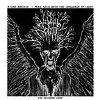 Two sides of a paranormal equation are presented in this cluster of songs. Decorated with primitive drums, avant drones, eclectic voices, and an array of stringed splendor, the two groups arrive at a meeting ground in the crossroads, with the arcane formulas of folk magic flowing down one street, and the poetic musings of a post-modern bard immersed in his lyrical wonderland on the other. Where one is ecstatic in the throes of Dionysian abandon, the other zones out into a haunted, rarefied Aethyr.
Two sides of a paranormal equation are presented in this cluster of songs. Decorated with primitive drums, avant drones, eclectic voices, and an array of stringed splendor, the two groups arrive at a meeting ground in the crossroads, with the arcane formulas of folk magic flowing down one street, and the poetic musings of a post-modern bard immersed in his lyrical wonderland on the other. Where one is ecstatic in the throes of Dionysian abandon, the other zones out into a haunted, rarefied Aethyr.
On the first side of this split 12" the group Stone Breath cauterized my wounded soul with the mythic sounds of their merrymaking. Playful and serious, reminiscent of wood elves and fey kicking around on some hand drums, banjos and dulcimer at a moonlit barn dance; the freshly painted hex sign above the wide double doors is charged by their sonorous vibrations, and the lunar light.
Of the three tracks the first is a slivered fraction of the two longer players. A brief line in a stanza, the lyrics are punctuated by deft finger picking. Resonant silver strings explode in a quick pattern that vanishes before its structure can be discerned, an experience both beautiful and terrible. "Scorpion Tears" shows off the highly focused ritual vocals which swerve back and forth from male to female, in a fiery dance. The deep male vocals are noble and assured and like a pink beam aimed at the third eye the words contain revelations. Where the second song is woody and deep, the third releases bright ripe notes. It feels racy and full bodied. "The Sky's Red Tongue" contains the same fast fingerpicking, but here the various guitars are dominant, whereas before the banjo was sustained in the foreground. Low whistles and flutes drone along, not quite trilling, a subtle bed the rest of the sounds swirl over. Until such a time as enough pressure is built up and the waters of the song poor over the spillway. Stone Breath manage to create songs that feel both decorous and informal. Good thing they have released a full length album, also titled The Aetheric Lamp and also out on Anti-Clock.
Stone Breath has a definite pagan quality, while Mike seed in contrast, is a touch more biblical, if not apocryphal. The second side, while being roughly around the same length of the first, feels a tad more substantial in that there are five songs, each of a medium length. Within them Mike Seed shows what he is capable of when he joins forces with the Language of Light. This guy has a seriously eerie voice and delivery style, but hey, I like eerie. As the first song, "Commit to Water," begins I hear the slosh and the slush of the stuff. An enervating, sourced-from-who-knows-what sound then appears, like a piece of driftwood to latch onto for survival, as Mike starts to extemporize on angels, Satan, and the soul.
"Rough Old Night" is my favorite song here, smack dab in the middle. The wormwood star makes an appearance in the lyrics for this one, as the narrator of the song rambles down to a desolate beach contemplating judgment day. The electronics lend it a favorable charm, dizzy oscillations power-surging at the right moments to embellish, with a moody punch, the darkness of the words. "Abraham's Guest" veers into bluesy terrain, with slurring slide guitar. Mike Seed sounds raspy and desperate, but resigned to his fate, which he finds in a deranged sputter of firework effects and the ominous beat of a dream. This fades seamlessly into the last number, an instrumental which offers reprieve, like a good friend giving shelter when it is most needed, protecting me from invisible forces who may not have my best interests in mind, sitting up with me until dawn when the madness goes away. A simple and elegant melody, on autoharp, dulicmer, or guitar. Does it really matter? It sounds wonderful and makes for a smooth finish.
Sorry, no audio samples. I don't have an easy way to transfer vinyl to digital.
Read More
- Administrator
- Albums and Singles
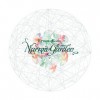 The year's first contender for top honors comes from violinist and composer Eyvind Kang. This new full-length on Ipecac sits among his major works, displaying a rare breadth of compositional talent, spectacular playing, and raw emotion.
The year's first contender for top honors comes from violinist and composer Eyvind Kang. This new full-length on Ipecac sits among his major works, displaying a rare breadth of compositional talent, spectacular playing, and raw emotion.
Eyvind Kang is a modern compositional giant who should require no introduction to the Brainwashed community. Kang has collaborated with avant-garde musicians ranging from Sunn O))) to Sun City Girls, and has contributed string arrangements to records by John Zorn, Mike Patton, Animal Collective, Bill Frisell, Laurie Anderson and Lou Reed (pre-Lulu). Most recently, his appearance on last year's Baroque Primitiva, by Alan "Alvarius B" Bishop, elevated that album from "very nice" to "essential." His solo recordings span well over a dozen full-lengths in 15 years, with highlights including Athlantis, The Yelm Sessions, and an Ipecac album smeared by (surprise!) Patton's divisive croon: Virginal Co Ordinates, which I very strongly feel is Kang's best album. Until now, that is.
Kang is at the very top of his game on The Narrow Garden, at a lean seven tracks and 37 minutes with no filler. Opener "Forest Sama'i" functions as a grand prelude, launching the album on a melodic, playful note. Kang recorded The Narrow Garden in Barcelona with an ensemble cast of 30 musicians, and on pieces like "Forest Sama'i," the group effort shines. Grounded by a Middle Eastern-derived melody, accented by meticulous woodwinds and strings (including Kang's violin), the song speeds its tempo near the end to stirring effect. "Pure Nothing" recalls Kang's collaborative LP with Jessica Kenney, Aestuarium, reissued last year on Ideologic Organ. Here, Kenney sings as if from a church hymnal, her angelic vocals floating across a classical soundscape, rich with quivering strings, as she cries out with pseudo-naïveté: "I cannot say whether I am asleep or awake / somebody tell me."
Led by the cries of seagulls at the start of "Usnea," a stormcloud of eerie atmosphere hovers onto the scene. The mood shift from "Pure Nothing" to "Usnea"—from Kenney's cloudbusting vocals into queasy dread—is perfect in its execution. The wall of Dolby THX-worthy, droning maelstrom eventually cedes to a couple of lingering woodwinds, dancing in the aftermath of the storm, transitioning into "Mineralia" at the album's midpoint. Kenney returns for a few operatic lines in what sounds like Latin, her singing this time hushed, drawn inward; she is overtaken by lush melodies that recall those of "Forest Sama'i" as the piece evolves. The spacious, relaxed tone foreshadows the title track, which is far more harsh and claustrophobic.
"The Narrow Garden" echoes the slow-building unease of "Usnea," with its chorus of stringed instruments lingering just long enough on individual, discordant clusters of notes to keep one's breath held tightly. "Nobis Natalis" clears the air to nice effect, spotlighting Kenney's vocals for a minute-long encore performance—and providing a palate cleanser before the album's strongest (and closing) statement, "Invisus Natalis." Cinematically evoking an array of natural imagery—birds, plants, flowers, water and so forth—Kang's melodies dance and twist about with ease. Over time, the song builds to a climax; violence is imminent, implied by the awesomely tense arrangement that steamrolls into film score-worthy drama, then unexpectedly drops out in a flicker of static.
Engaging from start to finish, The Narrow Garden is a strong contender for Eyvind Kang's best, and undoubtedly ranks among his high water marks as a recording artist. Its songs take real risks, skipping from Arabian and Middle Eastern melodies, to traditional Asian folk music, to Baroque and European classical composition. Envisioned and set into motion by one of today's sharpest composers, impeccably arranged, flawlessly played, beautifully produced: I cannot conceive of any way to improve upon Kang's stunning achievement on The Narrow Garden.
Samples:
Read More
- Administrator
- Albums and Singles
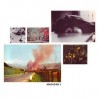 Loops of Your Heart is Axel Willner, better known as The Field for his three albums to date on Kompakt. His debut full-length under this new moniker sets aside the minimal techno formulae of his primary guise for a far more ambient experience. Unfortunately, he discards many of the distinct characteristics of The Field in the process, downplaying his established strengths.
Loops of Your Heart is Axel Willner, better known as The Field for his three albums to date on Kompakt. His debut full-length under this new moniker sets aside the minimal techno formulae of his primary guise for a far more ambient experience. Unfortunately, he discards many of the distinct characteristics of The Field in the process, downplaying his established strengths.
Like many side projects and alter egos before him, Loops of Your Heart sounds like a venture for Willner to explore ideas that he deems a bit too left-field for The Field's albums. His debut song released under this name was "Riding the Bikes," available for mass consumption on Kompakt's Pop Ambient 2012 compilation (also out this week). That track's echoing, looped guitar sounded not unlike a lost Vini Reilly piece; with no beats to speak of, it was a far cry from Willner's work as The Field. "Riding the Bikes" provided a glimpse of where Willner has now moved on his full-length as Loops of Your Heart, And Never Ending Nights. It's certainly not all Durutti Column-esque guitar (in fact, there's hardly any guitar on the album), but there are several hard experiments throughout. Nearly the entire album is looped ambience, occasionally backed by throbbing synth lines better described as "pulses" than "beats."
The opening "Little You, You Should Develop," with its gritty, two-note bass line hinting at an underlying rhythm, would not have sounded out of place on The Field's latest album, Looping State of Mind. However, the track's title is a glimpse into Willner's state of mind—a plea to his own muse, perhaps, to push forward into more experimental territory. And push forward he does: "Broken Bow" decries any hint of a minimal techno beat for its initial five minutes, abstract synth tones stabbing through a barren wasteland of drone, before a pitter-pattering pulse sneaks into the mix about halfway through. "Neukölln" is all spaced-out, sweeping strokes, with just a hint of melody and no beat in sight—not a far cry from Daniel Lopatin's early records as Oneohtrix Point Never. The wide-ranging samples scattered throughout The Field's albums are mostly absent; the sounds on this album, even when looped back onto themselves ("Cries"), sound organic, and are not recognizable from popular sources.
There are hints of Willner's day job scattered throughout, like the fluttering tones of "End," but the prevailing mood is less oriented toward the dancefloor, and more toward late-night reflection. Still, it is difficult to shake the feeling that And Never Ending Nights often sounds like a vehicle for Willner to sift through new ideas before his next major statement. I can picture a Field track like "Then It's White," the most outlying experiment on Looping State of Mind, coming from the same recording sessions as this album. At the end of the day, The Field's work is far more distinct, given that Willner has perfected his formulae three albums in, and is essentially making careful refinements at this point. And Never Ending Nights is pretty and occasionally memorable—like the heartstring-tugging coda to "Cries," the album's peak—but doesn't match the high quality and originality of Willner's albums as The Field.
Samples:
Read More
- Administrator
- Albums and Singles
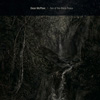 This English guitarist's first full-length is just as impressive as last year's excellent Brown Bear EP, but displays quite a significant and somewhat unexpected evolution.  Rather than playing up the psychedelic touches and constant sense of motion that made his earlier work immediately gratifying, Dean has taken the more difficult and distinctive road of shifting his emphasis more strongly towards space and decay.  Thankfully, his melodies are usually strong enough to support that potentially perilous decision.  As a result, Son of the Black Peace is as much a bold artistic statement as it is a great album.
This English guitarist's first full-length is just as impressive as last year's excellent Brown Bear EP, but displays quite a significant and somewhat unexpected evolution.  Rather than playing up the psychedelic touches and constant sense of motion that made his earlier work immediately gratifying, Dean has taken the more difficult and distinctive road of shifting his emphasis more strongly towards space and decay.  Thankfully, his melodies are usually strong enough to support that potentially perilous decision.  As a result, Son of the Black Peace is as much a bold artistic statement as it is a great album.
The one thing that most fascinates me about Dean McPhee is that his style is so difficult to deconstruct: he isn't doing anything ostentatious or overtly experimental, but there is no clear chain of influences leading to his sound.  There are definitely some subtle nods to Takoma Records, jazz, and contemporary pedal-stomping experimentalists, but Dean seems to built upon their tactics rather than their content.These four songs sound like traditional folk-inspired steel-string instrumentals that have been electrified, softened, slowed down, blurred, and improvised into something new.
McPhee is quite adept at weaving strong melodic motifs, as he proves with both the opening harmonic reverie in "Power of Nines" and the Eastern-inspired central riff of "Golden Bridge," but the true depth of his artistry is a bit deeper and less immediately apparent.  Dean wields his battery of pedals in a remarkably nuanced and ingenious way, using delay and chorusing to keep notes hanging and shimmering in the air like a fog.  That nimbus of gently quivering decay holds the pieces together (kind of like drone music) and eliminates the need to stay busy or play a lot of notes just to keep the songs' momentum going: Dean is clearly trying to bring as much sensitivity and feeling to his notes as possible.  He wants them to matter.
Well, perhaps not quite all the time, as another great facet of this album is that almost everything McPhee does is essentially a fantasia on a theme.  The basic framework of these pieces is often merely a jumping-off point for endless variations and improvisations.  That tendency could be quite tedious in the wrong hands, but Dean has a knack for deftly and unexpectedly locking back into the melody in a tight and oft-striking way.  At times, I wish he would stick a bit closer to the song's core (particularly when there is an especially likable melody), but I still enjoyed the low-level tension of wondering how he is going to pull things back together.  He even managed to surprise me a bit near the end of "Cloud Forest," as he wields feedback in a way that weirdly approximates a singing saw (while still maintaining a skeletal chord progression, no less).
Notably, this album was recorded in single takes with absolutely no overdubbing (apparently in a single afternoon, even), yet it sounds like the end result of a lengthy and painstaking process of distillation.  In fact, Son of the Black Peace feels like such a product of restless and exacting perfectionism that it seems like it only could have been recorded in this fashion–it needs  that organic, spontaneous feel as a counterbalance to make it all work (which it certainly does).  Some of McPhee's artistic decisions (increasingly abstract divergences, fewer attention-grabbing "set pieces," etc.) make this album a bit less immediately accessible than its predecessor, but it is worth the effort to get past that.  I'm admittedly a little concerned about how dangerously close Dean is to crossing the line between "refreshingly reflective and understated" and "languidly meandering," but he is staying on the right side pretty damn consistently at the moment (it helps that he keeps his releases somewhat brief though).  If it finds its way to enough ears, this masterful and subtly mesmerizing effort should quietly ensconce McPhee in the upper echelon of contemporary solo guitarists (which is exactly where he belongs).
Samples:
 
Read More
- Administrator
- Albums and Singles
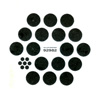 It seems that I badly underestimated William Basinski, as I stopped following his career several years ago out of frustration with his apparent creative stagnation.  His methods and conceptual underpinnings have certainly evolved steadily, but it seemed like the end result was always something murky, free-floatingly melancholy, and endlessly repeating, regardless of how he got there.  Then I heard this 2009 album and was unexpectedly floored.  Basinski seems to have found whatever it was that he was missing.
It seems that I badly underestimated William Basinski, as I stopped following his career several years ago out of frustration with his apparent creative stagnation.  His methods and conceptual underpinnings have certainly evolved steadily, but it seemed like the end result was always something murky, free-floatingly melancholy, and endlessly repeating, regardless of how he got there.  Then I heard this 2009 album and was unexpectedly floored.  Basinski seems to have found whatever it was that he was missing.
Or maybe he had it and lost it.  It is difficult to say, as the first three pieces here were all recorded way back in 1982.  All on the same night, actually, which is where the album derives its seemingly cryptic title (the fourth piece is a recent composition using the same source material).  Curiously, the nearly-as-excellent Vivian & Ondine (also from 2009) similarly cannibalized old compositions to great success.  At the very least, William definitely seems to be extremely adept at choosing what to revisit and release these days.  Obviously, such tactics are nothing new for Basinski (artfully re-purposing his past work is arguably the basis for his entire career), but 92982 differs from his other "recent" work in some very subtle, yet very important ways.  Naturally, the closest touchstone for these lengthy, slow-moving ambient washes of distressed and damaged tape loops is William's career-defining Disintegration Loops series.  At the risk of sounding heretical, I would say that he easily surpasses that high-water mark here.  In any case, he has certainly found a way to make his work in that vein more engaging.
Being a William Basinski album, 92982 is characteristically still pretty blurry and suffused with sadness, but the loops have a bit more of a distorted physicality than usual.  That seems like such a minor difference, but it gives the pieces a heightened presence–there's some definite heft and grittiness here that I usually find lacking in William's work.  The other, more unexpected, innovation is that Basinki recorded the original tapes with the windows open in his studio.  I can't possibly overstate how vital that seemingly trivial quirk is to the success of these pieces: it changes everything.
In the most obvious sense, the ambient Brooklyn sounds (sirens, helicopters, fireworks,etc.) that subtly drift in and out of the fog make everything seem a bit more unpredictable, mysterious, and dynamically satisfying.  The pieces are no longer mere haunting loops that glacially wax and wane for twenty minutes, but instead feel like thoughtful compositions with unconventional crescendos ("Shhhh...here comes the ambulance–this is my favorite part!").  Less obviously, allowing the sounds of the world outside to seep into the music also makes it seem much more organic and alive.  Most important of all, however, is this: on a deeper level, having such a sense of place and time makes 92982 feel like an extended love song/elegy for both a city and an entire era of Basinski's life.  They don't just sound good–these pieces have some serious emotional resonance of the "bittersweetly heartbreaking" variety.
In a way, 92982 is a perfectly realized collision between The Disintegration Loops and John Cage's "4'33"."  It narrowly misses being a perfect album though, as it arguably would have been better if it had ended after the achingly beautiful and gently swaying first half.  The argument: I'm a bit conflicted by the third piece, "92982.4," simply because it doesn't feel like it relates thematically to the pieces that precede it.  Taken by itself, however, it is quite good (if a bit overlong): a fragile, dark, and tirelessly repeating piano loop unfolds for 20 minutes as the accumulated overtones oscillate and clash uncomfortably below it.  It sounds like either a sun-warped Morton Feldman record or one of Erik Satie's nightmares.  The closing "new" piece is deeply exasperating though, as it is essentially just a sterilized version of the opening piece with all the hiss, grit, and life removed.  It's still a fine composition, but the fact that Basinki made an ill-advised cosmetic "improvement" upon something that was already perfect makes me wonder if he fully understands and appreciates what a stellar album his brilliant 1982 self made.
Samples:
 
 
Read More


